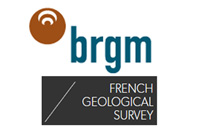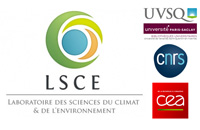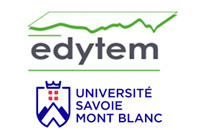
Involved Research Groups

The Environmental Geosciences research group at the University of Basel develops and applies isotopic, radiogenic, and biomarker tracers to study soil health and soil degradation. The group uses these tracers as indicators of wetland status (natural, drained or restored) as well as to assess soil degradation of upland soils with a focus on soil erosion. To bridge from small scale to large scale, they apply modelling and remote mapping, ranging from local, regional to global scale through automated machine learning and geostatistics to interpolate remote tools (aerial photos, satellite data). In assessing soil degradation, the group includes evaluation of nutrient budgets and export (especially phosphorus loss from soil ecosystems in light of the imminent threat of peak phosphorus which would heavily affect global food security).

The Gravity Risks and Instabilities Unit of the Bureau de Recherches Géologiques et Minières (BRGM) has been working in collaboration with LSCE during the last decade. The unit has a developed a strong experience in quantifying soil erosion processes and sediment transfer either through extensive bibliographic and field monitoring programs or through the development of original soil erosion modelling approaches such as STREAM, PESERA, IRCA, FULLSWOF, and WATERSED, which will be deployed in AVATAR project. The combination of extensive monitoring programs and modelling permitted to address scientific gaps in soil erosion and sediment research, notably related to scale and connectivity issues.

The Swiss Federal Research Institute for Forest, Snow and Landscape (WSL) investigates changes in the terrestrial environment as well as the use and protection of natural habitats and cultural landscapes. It monitors the condition and development of forest, landscape, biodiversity, natural hazards as well as snow and ice and develops sustainable solutions for socially relevant problems - together with its partners from science and society. The WSL provides top performance in terrestrial environmental research. In this way, it promotes the quality of life and a healthy environment.

The Laboratoire des Sciences du Climat et de l'Environnement (LSCE) is a joint research unit between the CNRS (French National Centre for Scientific Research), the CEA (French Atomic Energy Commission) and the University of Versailles Saint-Quentin (UVSQ), all members of University Paris-Saclay. LSCE, and more specifically the GEochimie Des Impacts (GEDI) team, is interested in investigating the impact of anthropogenic activities on sediment and particle-bound transfers in river catchments using geochemistry tools (stable and radioactive isotope tracers, elemental tracers) and, more recently, other proxies including colour and environmental DNA. The GEDI team investigates stable and radioactive isotopic tracers along with major and trace elements in these samples with a wide range of analytical techniques such as ICP-MS, MC-ICP-MS, XRF core scanner facilities and low-background gamma spectrometry detectors. Through these analyses, they contribute significantly to the development of novel tracing approaches necessary to thoroughly understand transfer processes.

Environnements, Dynamiques et Territoires de la Montagne (EDYTEM) is a joint research laboratory of Université Savoie Mont Blanc, CNRS, and the French Culture and Communication Ministry. The “Critical Zone” team of EDYTEM is the French leader in the analysis of lacustrine sediments to reconstruct past environmental changes, with close attention towards human-climate-environment interactions. The team combines sedimentology, geochemistry and geochronology tools to investigate lacustrine archives to understand long-term critical zone trajectories and erosional processes.The team's goal is to propose indicators (sedimentary, chemical, geochemical, or molecular tracers) for material stocks and fluxes (organic, mineral, pollutants, nutrients, etc.) between different compartments of the critical zone, primarily through (i) observation systems based on instrumental sensors and/or (ii) retrospective analysis using natural archives (lake sediments, speleothems, tree rings).